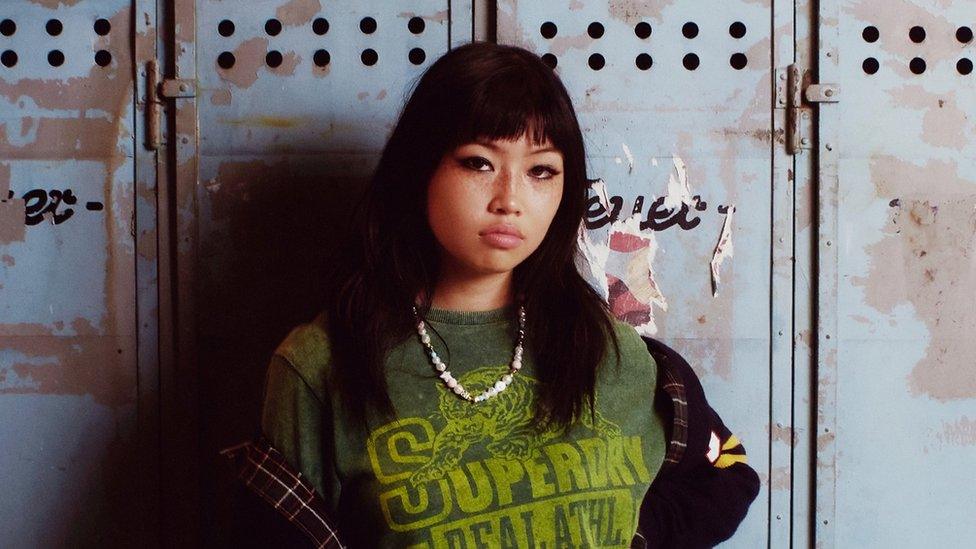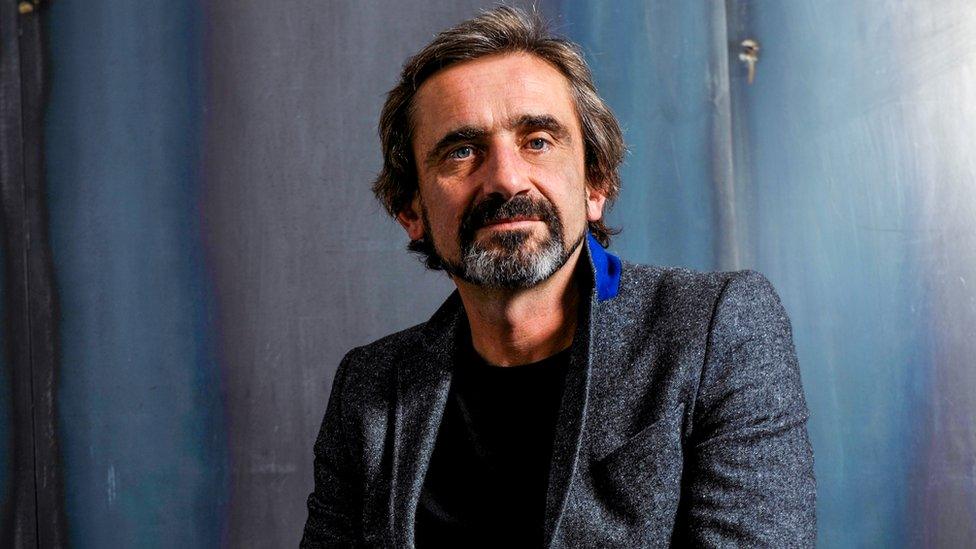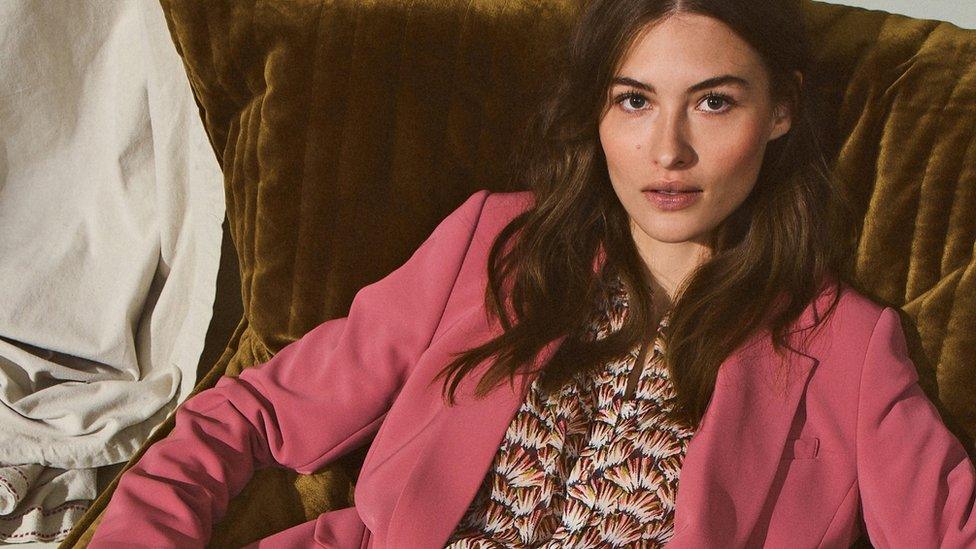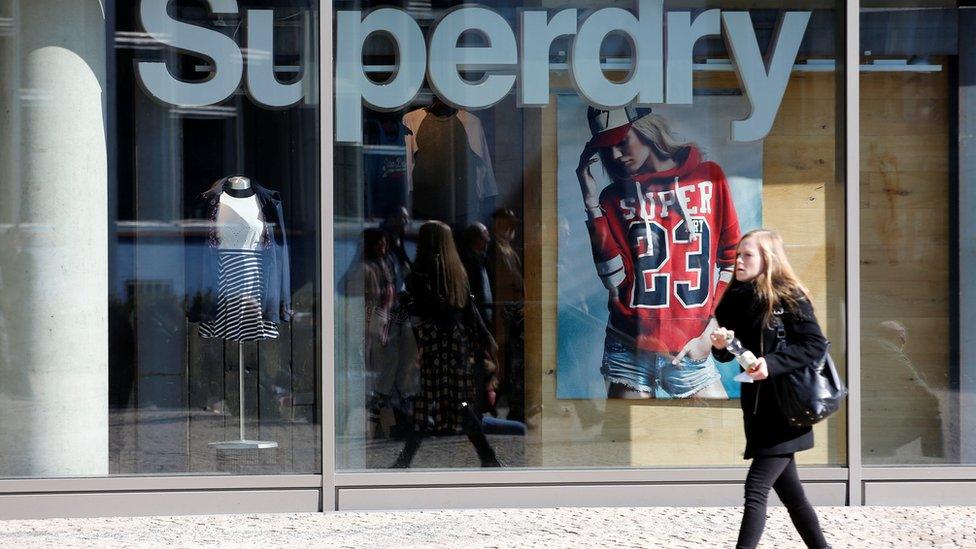Superdry warns prices to rise as it axes shop discounts
- Published

Superdry have teamed up with influencers such as singer beabadoobee to drive sales among older teens
Superdry's boss has warned that shoppers should expect higher prices due to rising costs and says the chain will have no more sales in its shops.
Julian Dunkerton said it would increase prices on some clothing items by about 2% due to rising inflation.
It hopes to offset price rises by cutting the number of items it puts on sale online too.
"We are a fantastic value brand and will remain so," Mr Dunkerton told the BBC.
Other companies, such as Kingsmill bread-owner AB Foods, Greggs and Next have all said that spiralling costs of wages, manufacturing and raw materials mean they have either put prices up or are planning to do so in the future.
Official figures released on Wednesday showed that soaring food costs and energy bills had pushed up the cost of living at its fastest rate in nearly 30 years.
Inflation, which measures how costs change over time, jumped to 5.4% in the 12 months to December - up from 5.1% the month before,.
But Mr Dunkerton's comments came as Superdry reported a return to profit, with trading helped by new clothing ranges and a social media push using influencers.
It reported a pre-tax profit of £4m in the six months to late October - up from a nearly £19m loss one year before when non-essential shops were closed during lockdown.
Sales across the company dropped, however, by 1.9%. The company said that was down to the fallout of the pandemic, as well as its move to reduce discounts.
It pointed to bright spots in Christmas trading, with jacket sales up 40% year-on-year, for example.
'Army of influencers'
The company is also looking to draw in younger shoppers with a mix of different products, and Mr Dunkerton said he hoped the brand "is just becoming cool again".
Superdry said that mini skirts and "70s vibe" flares had been performing well with older teens - one of their key target markets.
To capture the imagination of younger fashionistas, it has stepped up its social media marketing on Instagram and TikTok, taking cues from the likes of online giants Boohoo and Asos.
The company now works with about 2,000 influencers, up six-fold year-on-year, and said its Instagram followers had increased by nearly a quarter.
Mr Dunkerton told the BBC that Superdry's launch on TikTok had gone well.
"That will see huge growth for us," he said.
"We only started on there in September and we've got nearly 100,000 followers already - it's a key way of talking to our teenage demographic."

Julian Dunkerton co-founded Superdry in 2003
Superdry, which started out as a market stall in Cheltenham, was set up by by Mr Dunkerton and James Holder, and went on to enjoy huge commercial success.
But clashes followed between Mr Dunkerton and the board, leading to his resignation from the board and eventual return in 2019 to "steady the ship" after huge losses.
Increasing engagement on social is understood to be a key part of his strategy, with the brand working with influencers and on tie-ups with celebrities such as Brooklyn Beckham and football superstar Neymar Jr.
"We want to build up our influencer base throughout Europe and start in American the tail end of this year. We will end up with an army of influencers because that's a key part of our strategy," Mr Dunkerton said.
Its influencers are often sent free clothing, or might receive payment for their sponsored ads online.
Richard Lim, chief executive of Retail Economics, said: "The battle for customers' attention is increasingly being fought online as the pandemic has accelerated the influence of digital across the entire customer journey.
"Retailers are leveraging the reach offered by influencers across social media platforms to connect with new customers and new markets."
Superdry's new flagship store on London's Oxford Street has also put selfies and reels at its centre.
Having opened in November, it features an entire floor closed to the public, instead dedicated to hosting social stars in its showroom and a gin bar.
- Published6 January 2022

- Published11 January 2022

- Published19 January 2021
